
The
Academy of Natural Sciences
Philadelphia,
PA

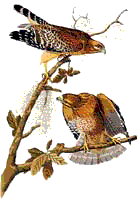
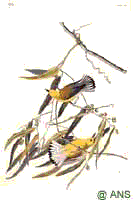
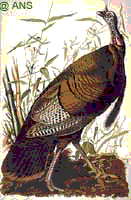
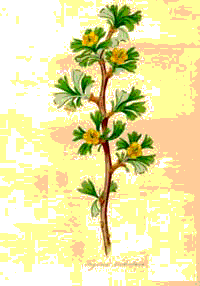
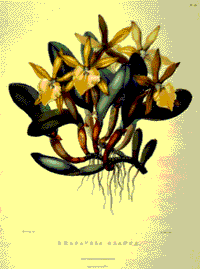



|
 The Academy is comprised of these parts:
The Academy is comprised of these parts:
- The
Museum with a
number of ongoing exhibits (permanent and
temporary);
- The
Environmental Research
Laboratories
comprise the foremost watershed research and education
group in the USA, with a total watershed approach from
headwaters to coastal oceans. Education and research
programs are conducted at
- The
Biodiversity
Group focuses its
field research around the world where habitats are
endangered and species are threatened with extinction.
Field research is complemented by molecular studies
conducted in the laboratories in the Division of
Biodiversity and Evolution in
Philadelphia.
- The Research Centers of the
Academy are as follows,
- Biodiversity
Group
maintains vast biological collections containing more
than 23 million specimens. Collections are divided
through the following departments:
- The
Botany
Department
contains one of the largest collection of plant
specimens in the world (which are housed in the
Herbarium) with nearly two million dried, pressed
plants, some collected more than two hundred years
ago.
- The
Entomology
Department
houses some 3,250,000 insect specimens. With the
largest collection in the world of grasshoppers and
crickets, the Academy's Entomology Department
pioneered the placement of a catalog of all known
species of a major group of insects on the
Internet. The Orthoptera
Species
File (OSF)
provides direct access to data on one of the most
economically important species - grasshoppers,
perennially one of man's worst competitors for
crops. The OSF contains complete taxonomic and
synonomic information for all species and genera of
Orthoptera, including text, images and sound
recordings.
- The
Herpetology
Department
has some 40,000 reptile and amphibian specimens.
The collection is unique for its richness in early
"New World" species including many specimens from
Panama and Costa Rica.
- The
Ichthyology
Department
holds some 1.5 million fish specimens in 120,000
lots making this fish collection the fifth ranked
International Ichthyological Resource Center in the
U.S. and Canada. The collection ranks in size among
the ten largest in North America.The collection is
world-wide in scope with good geographic and
taxonomic coverage. Approximately 10,500 species,
3,065 genera and 366 families of fishes are
represented. The collection is strongest in
neotropical fishes (freshwater and marine), North
American fishes (freshwater and east coast marine)
and Indian Ocean shorefishes. Neotropical holdings
include more than 41,000 lots, with concentration
in Colombian, Venezuelan, and Peruvian collections,
ranking first in size among the computerized
holding of the major participants of the NEODAT
Project (see the NEODAT
Gopher for
detail). The Academy's holdings of
anguilliformes,tetraodontiformes and carangids are
especially strong. Other groups of fishes that are
prominent in the collection include: characoids,
cyprinoids, neotropical catfishes, sunfishes,
gobies, blennies, serranids and flatfishes. There
is a world-wide collection of marine shorefishes,
but are notably weak in pelagic and deep-sea forms.
Anyone who studies marine and estuarine fishes
along the Atlantic seaboard will find it essential
to consult the Academy's important collections from
off-New Jersey and Delaware. Major Academy
expeditions and research in South America (Brazil,
Peru, Venezuela and Colombia), Central America
(Costa Rica), the western Atlantic (Bermuda,
Bahamas and Lesser Antilles) and the Indian Ocean
(Seychelles and Cocos-Keeling Islands) have
resulted in comprehensive collections vital to
anyone attempting taxonomic studies of fishes from
these areas.
- The
Invertebrates
Department's
collection is concentrated on localities in the
Eastern and Gulf Coasts of the United States. The
collection contains dry and alcohol-preserved
specimens representing 14 phyla which includes
Protozoa, Porifera, Cnidaria,Platyhelminthes,
Gastrotricha, Rotifera, Nemata, Nematomorpha,
Annelida, Arthropoda, Bryozoa, Brachiopoda, and
Echinodermata.
The systematically arranged collection contains
18,000 lots, about evenly divided between dry,
alcohol-preserved, and prepared slides of
specimens. The collection is strong in the
arthropod class Crustacea, particularly the
Decapoda, and in the phylum Annelida, particularly
the classes Polychaeta and Hirudinoidea. Important
taxonomically restricted collections within the
overall collections are:
- Edward Potts
Collection: Porifera
(Spongillidae)
- L. M. Dorcy
Collection and Rotifera J. Percy Moore
Collection: Annelida (Polycheata,
Hirudinoidae)
- Joseph Leidy
Collection: Parasitic Organisms (Nemata,
Nematomorpha), and
- Felix-Edouard
Guerin-Meneville Collection:
Crustacea
- The
Ornithology
Department
has a collection of over 163,000 skins, first in
the USA to be housed in compactors and entirely
recorded on a database. A variety of progressive
programs have become integral parts of the
department:
- Birds
of North America
(BNA) is
a series of 720 life histories of the nesting
species on this continent. With 200 accounts
published by January, 1996, the entire series
will be completed early in the next
millennium.
- VIREO
(Visual Resources for
Ornithology)
is the world's largest collection of bird
photographs with some 85,000 photographs of
5,832 species of birds -it is available for
science, conservation, education, advertising,
and publishing purposes.
- The DNA studies
focusing on relationships among species and the
process of evolution.
- The Department's
conservation and atlasing efforts in conjunction
with the RARE Center for Tropical Conservation,
the Pennsylvania Game Commission, the Western
Hemisphere Shorebird Reserve Network, and others
are part of the ongoing
projects.
- The
Department
of Vertebrate
Paleontology
holds a collection that includes the fossil
elephants studied by Thomas Jefferson, the first
dinosaur fossils from North America, the only
fossil collected by Lewis and Clark, as well as the
extensive collections of Leidy and Cope. Although
many of these specimens have great historical
value, they also remain crucial for primary
research. Today, the vertebrate fossil collection
houses more than 21,000 specimens of fish,
amphibians, reptiles, birds, and mammals.
In addition the Academy has
these two (2) impressive online
collections:
- The Malacology
Collection which
is the collection of recent mollusks is the oldest in the
country, and the second largest catalogued one in the
world. It currently has more than 430,000 catalogued lots
containing about 12 million specimens, including
30,000-35,000 lots preserved in ethanol.
Type specimens of more than 400
authors are represented in more than 12,000 type lots
covering specimens from all over the world. Greatest
strengths are in shallow-water marine mollusks from the
tropical Indo-Pacific and the Western Atlantic and
worldwide freshwater and land mollusks.
- The Invertebrate
Paleontology
Collections are
the oldest in the United States and hold material
collected and described by the earliest workers in
American and British paleontology. The collection
contains more than 5,000 lots of type material of more
than 100 authors including Timothy A. Conrad, William M.
Gabb, Henry C. Lea and Isaac Lea, Samuel G. Morton, Axel
A. Olsson, Anne Harbison and Henry A. Pilsbry. Strengths
of the collection are in Cenozoic and Cretaceous Mollusca
of the New World, particularly the Atlantic and Gulf
Coastal Plains; Quaternary Mollusca worldwide; and the
Mesozoic of England. About 75% of the collection is
molluscan fossils; total holdings are approximately
106,000 lots containing about 1,000,000
specimens.
Finally, notable is the
Academy's Library, The Ewell
Sale Stewart
Library, with its
extensive collections of books, manuscripts, archives, maps,
paintings, and
photographs, as well as on-line
services. The Library has been designated a major research
library by the U.S. Department of
Education.
|









